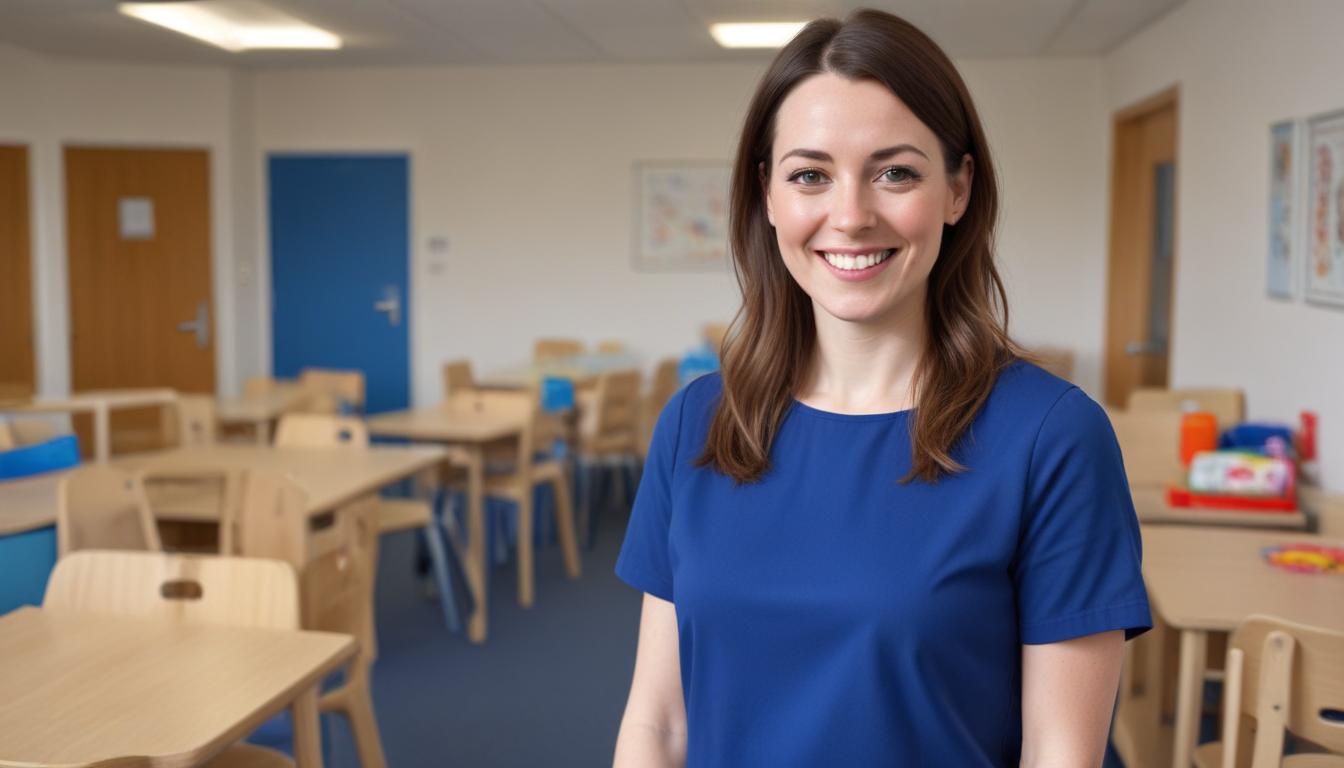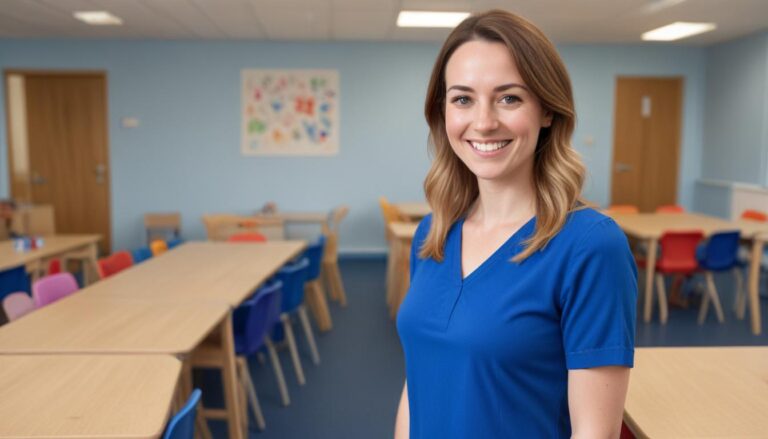This guide will help you answer 2.2. Explain what is meant by the term ‘safeguarding’ as applied to children and young people.
Safeguarding is a term that often comes up in discussions about children and young people’s safety and well-being. Essentially, safeguarding means protecting children and young people from harm, abuse, and neglect. There’s a legal duty in the UK for people working with children to help protect them. Safeguarding doesn’t just apply to social workers or teachers; it encompasses several professions and roles. For example, healthcare professionals, law enforcement officers, and community workers all play a part in safeguarding children and young people. This can involve recognizing signs of abuse or neglect, reporting concerns to the appropriate authorities, and implementing safeguarding measures to ensure the safety of vulnerable individuals. Ultimately, the goal of safeguarding is to create a safe and nurturing environment for children and young people to thrive.
Safeguarding includes ensuring children grow up in environments consistent with the provision of safe and effective care. It also involves action to enable all children to have the best chances in life, allowing them to enter adulthood successfully.
What is Abuse and Neglect?
Before we dive deeper into what safeguarding truly means, let us first look at types of harm from which children need protection. Abuse can be physical, emotional, or sexual, and neglect can leave long-lasting scars on the child’s psyche.
- Physical abuse: Inflicting physical harm or injury on a child. This could include hitting, shaking, or any form of physical harm.
- Emotional abuse: Persistently emotional maltreatment that affects a child’s emotional development. This may involve making children feel worthless, unloved, or only valuable in meeting another person’s needs.
- Sexual abuse: Involves forcing or persuading a child to take part in sexual activities. This may not always involve a high level of violence or involve penetration.
- Neglect: The persistent failure to meet a child’s basic physical and/or psychological needs. This can include things like a lack of food, clothing, and shelter that will seriously impair the child’s health or development.
These harmful experiences highlight why safeguarding is critical. Those working with children or young people, directly or indirectly, must be vigilant and responsive to signs or disclosures of abuse or neglect.
How to Recognise Signs of Harm
Being able to recognise signs of harm is essential in safeguarding. This involves understanding both the obvious and subtle signs that might indicate a child is in distress or danger.
- Physical indicators: Unexplained injuries or bruises, burns, bite marks, or untreated medical issues.
- Behavioural signs: Sudden changes in behaviour, withdrawal, anxiety, extreme fear, or aggression.
- Emotional indicators: Low self-esteem, developmental delays, or regressive behaviour.
- Neglect indicators: Consistently poor hygiene, inappropriate clothing for the weather, or being very hungry.
Being observant and maintaining a sense of empathy plays a significant role in safeguarding children. If you notice these signs, it’s necessary to act promptly by recording your concerns and reporting them to the appropriate safeguarding lead within your organisation.
Legal Framework and Responsibilities
In the UK, several laws support safeguarding efforts, ensuring that children’s well-being is prioritised. The primary pieces of legislation include the Children Act 1989 and 2004, the Education Act 2002, and the Children and Social Work Act 2017.
- Children Act 1989 and 2004: These acts require local authorities to ensure children’s welfare and make the child’s well-being the paramount concern.
- Education Act 2002: Places a duty on schools and educational authorities to safeguard and promote the welfare of children.
- Children and Social Work Act 2017: Emphasises the need for improving developments and support for looked-after children.
These laws guide the procedures and policies implemented by organisations working with children and young people. They establish a framework for multi-agency partnerships to work together to promote safeguarding.
How to Create a Safe Environment
For effective safeguarding, creating a protective environment is essential. This involves setting up clear procedures and policies to support children and ensure they are safe. There are several factors to consider:
- Staff training: Regular training sessions to keep staff updated on safeguarding practices and how to recognise signs of abuse.
- Clear policies: Implement and communicate clear policies and procedures on safeguarding. These should be accessible to all staff members and explain how to deal with disclosures of abuse.
- Code of conduct: Establish a code of conduct for all staff and volunteers to adhere to, focusing on acceptable and unacceptable behaviours.
- Risk assessments: Conduct regular risk assessments of activities and environments to identify potential risks and implement measures to mitigate these.
Policies and procedures should be regularly reviewed and updated to ensure they remain effective and robust.
Responding to Suspicion or Disclosure
Knowing how to respond if a child discloses harm or you suspect abuse is crucial. The manner and speed of the response can have significant implications for a child’s well-being.
- Listen: Offer your full attention and show you take the child’s concerns seriously. Encourage them to tell you what has happened in their own words.
- Reassure: Let them know they’ve done the right thing by speaking out and that you will do what you can to help them.
- Record: Write down what the child has told you as soon as possible in their own words. Keep your notes factual and avoid interpreting or reflecting on your feelings.
- Report: Follow your organisation’s protocol for reporting concerns. Report them to a designated safeguarding lead or child protection officer immediately.
The goal is not for you to act as an investigator. Instead, ensure that the appropriate authorities, who have the statutory duty and skills, take protective action.
Multi-Agency Collaboration
Effective safeguarding requires collaboration among different agencies and professionals. This multi-agency approach means sharing information and working together to safeguard the child’s best interests.
Key partners in safeguarding include:
- Social services
- Police
- Health professionals
- Schools and educational establishments
- Voluntary and community sector organisations
Working collaboratively ensures a comprehensive approach to safeguarding where all aspects of the child’s life are considered. Information sharing between these agencies is guided by protocols ensuring confidentiality and respect for privacy.
Empowering Children and Young People
An often overlooked aspect of safeguarding involves empowering children and young people. By teaching them their rights and ways to protect themselves, they become active participants in their safety.
- Education: Informing them about their rights, safe relationships, and boundaries. Tailoring this information to be age-appropriate.
- Voice: Encourage children to express their concerns or needs, knowing their opinions matter and will be addressed.
- Confidence building: Instil confidence in them to say no or question unsafe or uncomfortable situations.
Empowering children fosters an environment where they feel valued and safe, strengthening the safeguarding culture.
Safeguarding in the Digital World
Today, children and young people spend a significant amount of time online. Digital safety is an important part of safeguarding, and it involves ensuring they remain safe from online threats.
- Awareness: Make children aware of potential online dangers such as cyberbullying, grooming, and exposure to inappropriate content.
- Education for parents: Equip parents with the tools and understanding needed to monitor their children’s online activities effectively.
- Secure internet practices: Encourage the use of safe, child-friendly platforms and educate on privacy settings and secure passwords.
Handling online safety should be an integral part of any organisation’s safeguarding policy.
Reflecting and Learning
Finally, professionals working with children should regularly reflect on their safeguarding practices. Learning from past incidents boosts preparedness for future challenges.
- Feedback sessions: Encourage group discussions and sharing sessions about safeguarding to learn from each other’s experiences.
- Case reviews: Analyse and learn from recent cases, focusing on what went well and areas needing improvements.
- Continuous improvement: Adopting and implementing lessons learned into practice.
Please always stay committed to safeguarding children and remain vigilant to new and evolving risks.
Subscribe to Newsletter
Get the latest news and updates from Care Learning and be first to know about our free courses when they launch.







